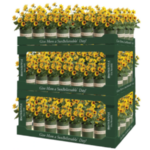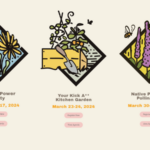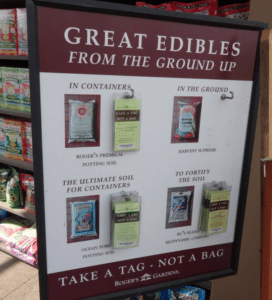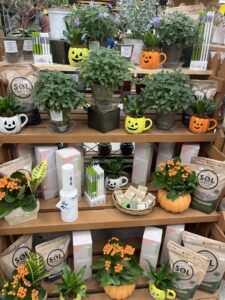In the Landscape, It’s All About Quality,
These are tough times, no doubt. There’s little room for mistakes, so save yourself time and money by choosing the best products from the start and guarantee success and satisfaction for your customers at the same time.
Unless you owned and operated a greenhouse or garden center in 1929, chances are the last five years have been the most challenging economic conditions you remember. I maintain that the bad times not the good necessitate our best business strategies.
Developing and improving a landscape market segment allows growers and garden centers to realize a new revenue stream. Here are two ideas, plus fail-safe plants you can use, to help successful garden centers and landscapers differentiate themselves from the competition.
Idea #1: Large Containers
Offer large containers of standard bedding plants. Four- and 6-inch plants, when used with proper spacing, actually reduce the total cost of a bed, even though the landscaper pays more per plant. Here’s how: 500 square feet of bed requires 2,000 plants if you use 6-inch centers (4 is the conversion constant). Set 4-inch plants on 12-inch centers, reducing the number of plants required to fill the bed by 500 (1 is the conversion constant). If flats of 32 plants cost $16, that’s five cents per plant or $1,000 to plant the bed; if 4-inch pots cost $1.30 each, then 500 plants cost only $650 to plant the bed. Larger containers offer your landscape customer other advantages: Less plastic waste at the job site eliminate plastic waste by offering 4-inch Ellepots fast rooting into the native soil, excellent stress tolerance and a more finished look from the start.
Idea #2: Tall or Spreading Garden Performers
How do you differentiate your products from those found at the mass merchandising garden center? One way to achieve this is by offering tall and spreading garden performers that the big boxes don’t have.
Traits To Look For
Heat tolerance, plant height and spread, as well as visual interest, are just a few of the characteristics you should consider when choosing landscape varieties.
Angelonia work well for the center and back of beds, where height and plant spread are essential. They have large blooms and perform well under the hottest, full-sun conditions.
Ageratum also are excellent for the center and back of beds. This variety fully blooms throughout the colorscape season to create continual viewer interest. Ageratum also can take all the stress that hot weather dishes out.
An ever popular daisy-type flower, gaillardia can easily take the stress of hot summer weather. Mounded and uniform in the colorscape, it works beautifully in mass plantings. Lantana is another great choice to fill large beds. Large flowers and excellent stress tolerance make cultivars like ‘Bandana Trailing Gold’ good for mass plantings.
Another good performer in the landscape is begonia. Begonia ‘Braveheart’ blooms continuously, spring through frost, and is unaffected by heat stress.
Helianthus sunflower with its yellow flowers and traditional brown center is a tall variety that is perfect in mass plantings and the hot summer weather. One variety in particular, ‘Constellation Yellow’, does not get “leggy” like many sunflowers and throws many medium bright yellow flowers with traditional brown centers.
Flower power and a soft spreading habit does not get brittle in the colorscape are also good traits for the landscape. A variety like rudbeckia TigerEye easily fills large beds and is excellent for the back and center of combo beds.
Lavender is another interesting flower form that works well in beds where the viewer gets up close and personal. It has a unique vintage appeal and can be used where huge plants are required.
The Spice of Life
By varying your selection, using both large containers and tall, spreading cultivars, you can differentiate your product offerings and services from everyone else. Then, by creating a difference between your offerings and the mass merchants to watch your business thrive.


















 Videos
Videos





